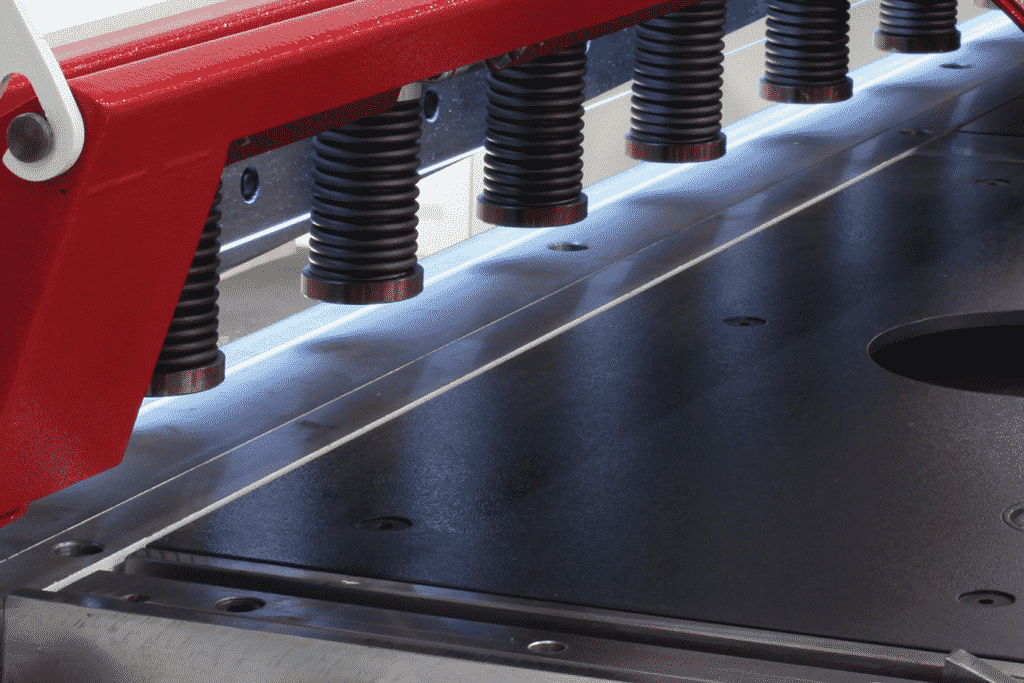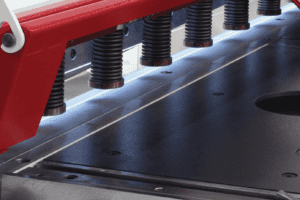Guillotines rely on their blades for performing the task for which they are intended, but when we talk about ‘turning’ them, what do we mean exactly, how can you literally ‘turn’ a blade, and why would you even bother?
Well, let’s look at guillotine blades in a little more detail, their shape, form and how they actually cut a workpiece, in order to make things a little clearer.
The first, and most important thing to learn is that guillotine blades are not at all like the blades of old…long gone are the days when a cutting blade fell directly down on to some poor, soon to be headless soul. Likewise the rolling guillotine blade that is guided along a bar to cut card and paper accurately, is very useful for the task, but for metalworking and fabrication, a completely different kind of blade set up is needed, and keeping that set up well maintained, is absolutely essential, both for your safety and the quality of your cut.
The blades on a modern guillotine, are not like conventional blades in the traditional sense, they work a little differently. Imagine the bottom blade as a long rectangular cuboid, with four very well defined edges along its length. The top blade is machined differently with a swing beam guillotine having only two cutting edges, with mechanical guillotines having four edges on the top and bottom, and normally the same number for variable models. These top and bottom blades work together to perform the powerful cutting action needed to cut sheet and plate metals.
Obviously, over time the corners of these blades, their cutting edges will grow dull, and it is then that turning them becomes necessary. But with a finite number of cutting edges, rotating the blades to obtain a fresh, new cutting edge is a task that can only be performed so many times; With 4 cutting edges on a blade top and bottom, then it can be turned three times, while four edges on the bottom and two edges on the top would mean three turns on the bottom and just one turn on the top.
Knowing these limits, knowing when to turn your blades, and performing these tasks methodically, are all vital to keep your machine in good working order whilst maintaining a safe working environment, getting it right is more than just important, it is absolutely vital.
At Selmach, we know all too well how easy it can be to put this off, to tomorrow, next week or a time when you might be a little less busy.
We also know that isn’t a good idea, and that is why we offer a fast blade regrind service, where our specialist team can remove your blades, bring them back to their best, and then refit them all in the same day, no stress and the minimum of disruption for you and your beloved guillotine.
To learn more about our fast regrind service, get in touch today, or give us a call on 01432 346 580
Published 31st October 2018


